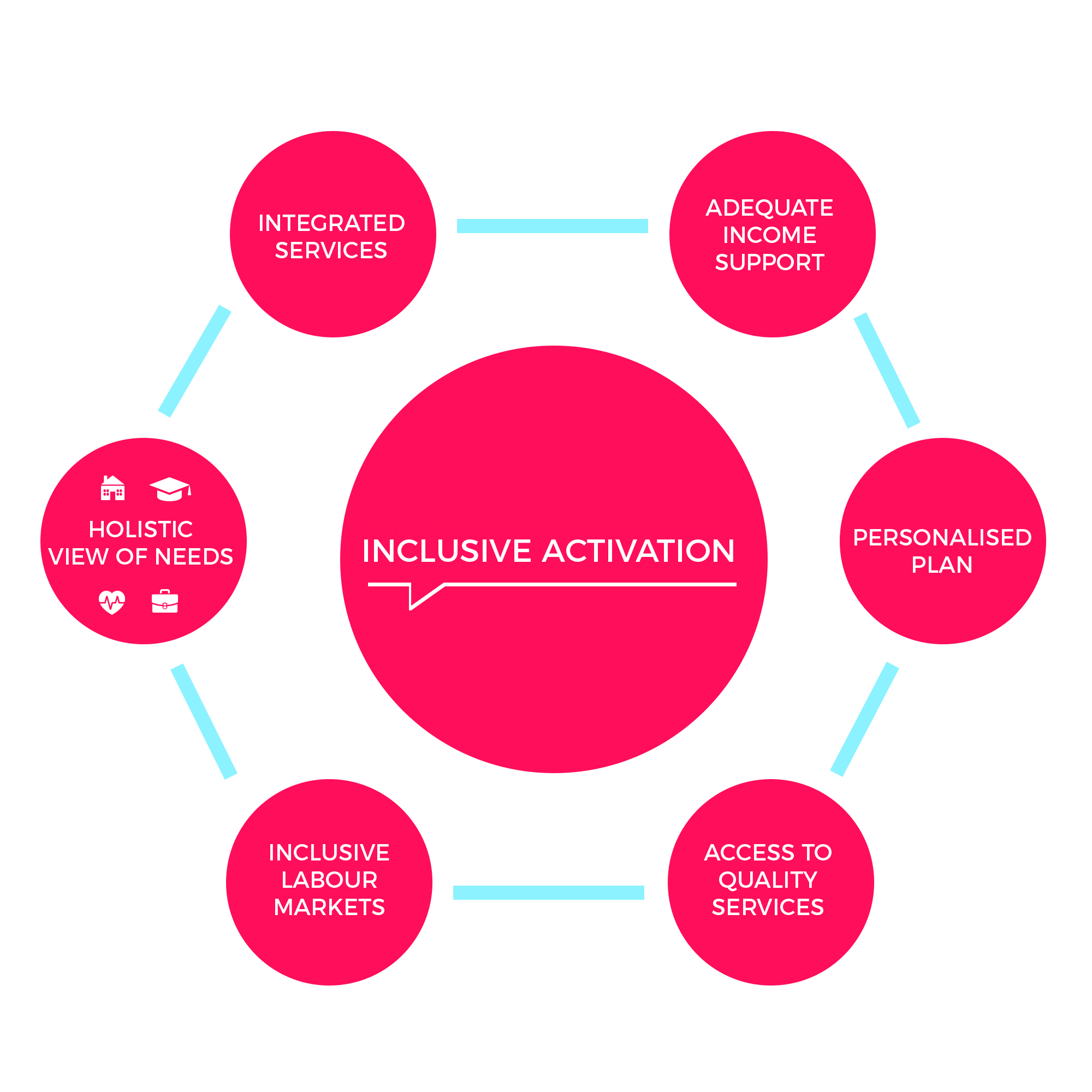The European Social Network (ESN) publishes a new toolkit that collects tools and examples of good practice in various European countries to support those furthest from the labour market.
In a new toolkit, the European Social Network (ESN), emphasises that activation based only on employment is not enough for the social inclusion of people furthest from the labour market, especially for those who face complex problems. Therefore, an evolution of policies and practices that moves from an activation approach focused exclusively on employment to a more holistic approach is essential. In this new approach social, health, education, housing and employment services are considered equally relevant to improve social inclusion outcomes for the most vulnerable.
The concept of ‘inclusive activation’ is based on six pillars, as shown in the figure.
An inclusive activation approach

The provision of services starts with an assessment of needs conducted by social workers, who in many cases become case managers. The assessment of specific needs is useful in order to establish a personalised plan, which also covers employability. Providing adequate income support is an important part of the personalised plan, especially with a view to preventing the multi-generational transmission of poverty.
This approach was at the core of our seminar that took place in Vienna (Austria) on 5-6 November, where over 170 delegates from all over Europe gathered to discuss tools for improving the social inclusion of people furthest from the labour market. The idea that emerged from the discussions focused on the need for better coordination of services and a personalised plan that takes into consideration the needs of users on an individual basis.
One of the examples presented at the seminar, Project ESTI@, implemented by the City of Athens (Greece) offers an integrated package of services and the creation of single points of access. This project is also funded by the EU Programme for Employment and Social Innovation (EaSI).
Another important aspect of the inclusive activation approach is public/private partnerships, as shown by the Project ‘Long-Term Unemployed Take the Lead’ implemented by the employment services of the City of Aarhus (Denmark). The partnership between the municipality of Aarhus, the University of Aarhus, the Centre for Social Development, and the Velux Foundation resulted in a project where grants of 50,000 DKK (approximately €6,700) were provided for 100 long-term unemployed citizens. All the project participants were given the opportunity to choose how to use the grant, and initial evaluations show that many preferred to start their own businesses. This project is part of a series of actions aimed at co-producing services with users, an additional innovative element of the approach based on inclusive activation.
In conclusion, in order to support vulnerable people, it is necessary to continue to offer integrated support even after the signing of an employment contract. Furthermore, improving the monitoring and evaluation of personalised programmes is a key element for ensuring the success of these plans.
Resources
ESN toolkit ‘Tools for inclusive activation. Improving the social inclusion of people furthest from the labour market’
Seminar ‘Inclusive activation: supporting social inclusion of people furthest from the labour market’
Video ‘Inclusive Activation: Social inclusion of people furthest from the labour market’
Best practice on inclusive activation:
- Project ESTI@, City of Athens, Greece
- Project ‘Long-Term Unemployed Take the Lead’, City of Aarhus, Denmark
- Project ‘Nelson Mandela’, Regional Government of Galicia, Spain
- Employment strategies for people with disabilities, Gloucestershire County Council, UK
- Back to the future, City of Vienna, Austria
- Grant Programme for Social Enterprises ‘Promotion of employment for groups at risk of social exclusion in Riga’, City of Riga, Latvia

